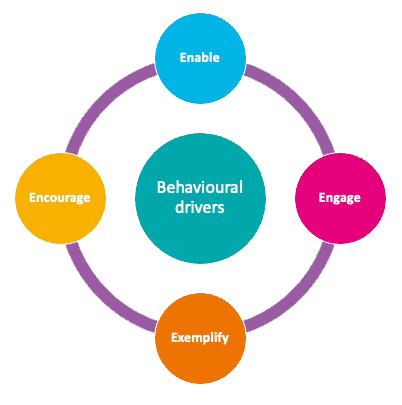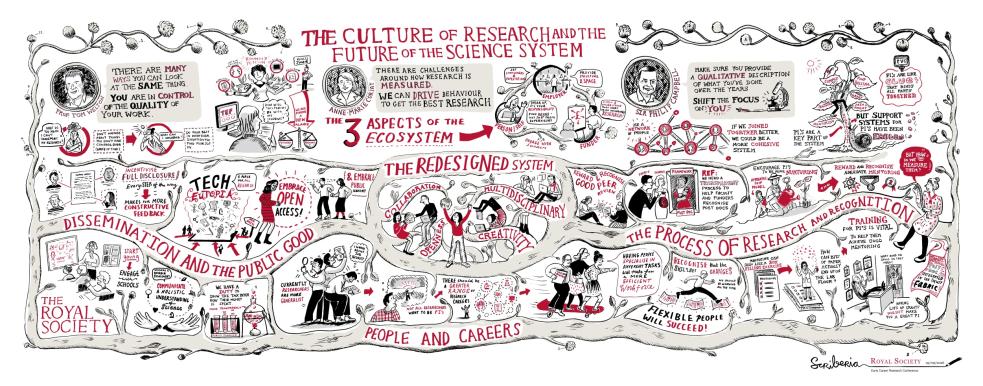Understanding culture change
This briefing shares the lessons learned around how to initiate, plan and achieve changes in research culture.
What is culture change?
There is an extensive literature about how to approach culture change, and a host of different models. The NCCPE has drawn on this body of knowledge, and also worked closely with many different teams across the HE sector to reflect on ‘what works’. This briefing summarises some of the key insights that inform our work.
The Royal Society have provided a useful definition on Research Culture:
Research culture encompasses the behaviours, values, expectations, attitudes and norms of our research communities. It influences researchers’ career paths and determines the way that research is conducted and communicated.
Culture change seeks to influence these behaviours, values, expectations, attitudes and norms.
Models of culture change
Various models of culture change exist. When the NCCPE initiated its culture change work, a useful starting point was a framework prepared by the Cabinet Office, which identified four behavioural drivers and a set of practical interventions to accelerate these. For each of the four ‘Es’ (engage, exemplify, enable and encourage) they identified actions that could be taken (e.g. the provision of financial incentives to encourage change).
 Adapted from Achieving Culture Change: A Policy Framework (Cabinet Office, 2008)
Adapted from Achieving Culture Change: A Policy Framework (Cabinet Office, 2008)
One can delve further into the culture change literature to find other useful models, for instance the ‘Behaviour Change Wheel’, which was widely drawn on during the Covid-19 pandemic to inform public health interventions. Developed by Susan Michie, Lou Atkins and Robert West the 'COM-B' model focuses more on how individuals can be encouraged to adopt new behaviours. It identifies three critical drivers of change - ‘Capability’. ‘Motivation’ and ‘Opportunity’ - and provides examples of interventions which encourage behaviour change in each of these.
 Behaviour Change Wheel, developed by Susan Michie, Lou Atkins and Robert West
Behaviour Change Wheel, developed by Susan Michie, Lou Atkins and Robert WestThe EDGE tool
The NCCPE has drawn on these quite pragmatic approaches, and developed our EDGE tool to help people quickly focus in on some of the key drivers of change. The EDGE tool is a self-assessment tool which invites staff to review how well developed these incentives and drivers are within their own organisation, and to use this to plan practical steps to accelerate change.
The EDGE tool has helped focus attention internally within universities and departments: for instance, leading to significant changes in internal incentives as reflected in promotions criteria and career pathways, and in the internal coordination and support for activity.
Change is a people-centred process
The other key insight which has shaped our work is the rather obvious point that culture change is all about people, and their attitudes, beliefs and ‘habits of mind’. One can focus on incentives and structures in a mechanical way, but it is also vital to create the conditions for people to engage actively in the process of change.
Early in the NCCPE’s work, we invested in a systemic action research programme, to help explore the perspectives of different ‘actors’ in the system (senior leaders, funders, academics, public engagement professionals etc). We have also drawn on ideas about how systems work and how people learn and change.
At the centre of our approach is a focus on ways of supporting active reflection and learning. Rather than producing manuals about culture change, we have tried to create simple tools like the EDGE tool that help people focus on critical dimensions of culture and work out for themselves how to address these. These can act as ‘scaffolds’ – a concept derived from constructivist learning theory, which emphasises the collaborative, cultural dimensions around how people learn and act.
Balancing pragmatic behavioural insights with a more complex understanding of systems change and social learning is important. The NCCPE has tried to balance these two approaches in how we have worked.
